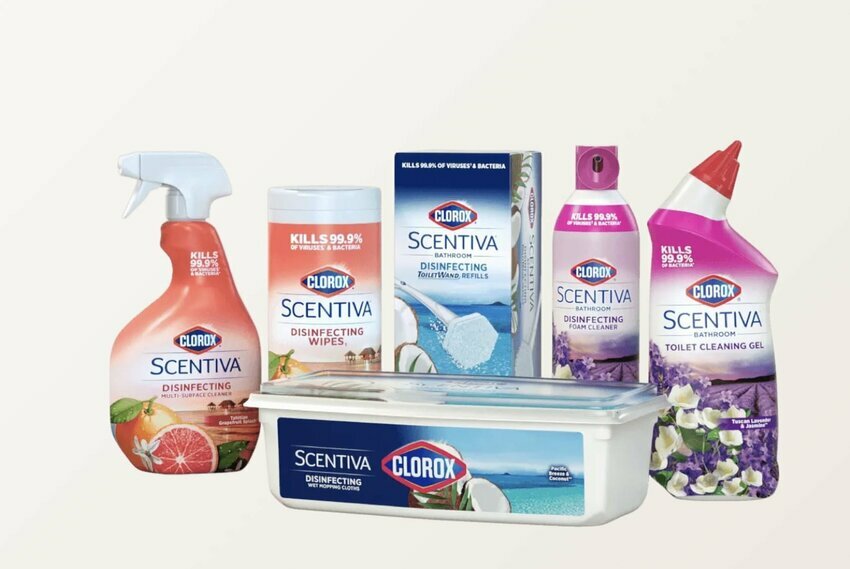 (Credit: The Clorox Company)
(Credit: The Clorox Company)The Clorox Company is a multinational maker and marketer of consumer products — the likes of Pine-Sol, Liquid-Plumr, Glad, Brita, and Hidden Valley. The Oakland, Calif.-based company also markets to professional customers, including such products as CloroxPro. It has 9,000 employees worldwide, and in 2021, it had sales of $7.3 billion. Clorox climate initiatives help the company to be routinely cited as one of the most environmentally conscious companies — a signatory of the United Nations Global Compact and the Ellen MacArthur Foundation's New Plastics Economy Global Commitment.
It is also listed as one of Barrons 100 most sustainable companies.
Some of its key priorities include using 100% renewable electricity to power its operations and reaching net-zero targets by 2050. Between 2018 and 2011 , it has cut its greenhouse gas emissions by 33% per cases sold and 25% absolute. It has also reduced its energy use by 18% per cases sold and 7% absolute, water consumption by 21%% per cases sold and 11% absolute, and solid waste to landfill by 21% per cases sold and 11% absolute.
After it incorporated science-based targets, between 2011 and 2019, it reported reductions of 25% per cases sold and 17% absolute waster consumption, and 41% per cases sold and 35% absolute for solid waste to landfill.
“We believe ESG drives growth and our impact leads to long-term value creation. said Linda Rendle, CEO of The Clorox Company. “We have strong aspirations for decarbonizing our business as we accelerate our growth agenda for long-term value creation for all stakeholders.”
In September 2021, Clorox raised the expectations of its climate goals — to achieve net zero emissions across Scopes 1,2, and 3 by 2050. (Scopes 1 and 2 deal with those emissions tied to its operations, while Scope 3 involves its supply chain.) The intermediate goal is to reduce CO2 levels by 50% by 2030 in Scopes 1 and 2 — its internal operations and what fuels it buys to run its business units. It aims to cut its value-chain emissions by 25% from the 2020 baseline.
A primary way it will cut heat-trapping emissions is to use 100% renewable energy in the United States and Canada to generate electricity. It achieved that goal in 2021. The goal does not apply to fuels used in its facilities. It enters into power purchase agreements and buys renewable energy credits. It achieved the goal four years ahead of schedule. For example, it has a 12-year commitment to purchase 70 MW of renewable energy annually from Enel Green Power's Roadrunner solar project in Texas. The "Roadrunner" solar plant began operating in 2020, and it is the largest solar plant in Texas.
Renewable energy credits guarantee that wind and solar plants get built. But the energy may not get directed to Clorox’s business. Clorox estimates these purchases avoid approximately 180,000 tons of CO2 emissions yearly. It says that this is equivalent to the annual impact that 235,000 acres of US forest can have in removing CO2 from the atmosphere or the carbon impact of the electricity needed to power 30,000 US homes annually.
Furthermore, “We’re proud that we cumulatively reduced our emissions by 52% per case of product sold and 40% on an absolute basis between 2008 and 2018, and we’re motivated to do more,” says CEO Rendle.
The goal of the Paris climate agreement is to limit temperature increases to 1.5 degrees Celsius. Therefore, Clorox has aligned its climate goals with this pact under the Science-Based Targets initiative. Its plan is to achieve net zero greenhouse gas emissions by 2050, starting with its commitment to using all green energy and increasing its energy efficiency.
That involves cutting its energy and water use within its operations. Its greenhouse gas emissions increased by 6% between 2018 and 2020 — a function of increased productivity during COVID and the need for more sanitation. That represents a roughly 2% increase between 2018 and 2020. Its energy and water use increased by 1% and 2% during this period. However, Clorox says that its operations were more efficient and reduced GHG emissions by 11%, energy consumption by 15%, and water withdrawals by 14% per product.
"At Clorox, we feel a sense of urgency to address climate change given current warming trends resulting in significant impacts on our planet and global communities," said Ed Huber, Clorox's Chief Sustainability Officer. "As a society, we're at a pivotal point, with the health and well-being of future generations at stake. We recognize businesses play an important role in driving needed progress, and Clorox is committed to doing our part."
Clorox’s signature ESG goal is called IGNITE. It targets plastics and other waste, primarily by limiting the use of virgin packaging. It is also working to ensure its waste is recycled or reused — driven by partnerships within its value chain: suppliers, customers, and governments. To that end, it is involved in the Ellen MacArthur Foundation’s New Plastics Economy Global Commitment and is a member of the US Plastics Pact. The goals since 2021:
— 50% combined reduction in virgin plastic and fiber packaging by 2030, now at 22% from a 2018 baseline.
— 100% recyclable, reusable or compostable packaging by 2025 is now at 76%.
— Double post-consumer recycled plastic in packaging by 2030 and 50% by 2025, which is now at 11%.
— 100% global facilities zero-waste-to-landfill by 2030, which is now at 40%.
“Three-quarters of our packaging is now recyclable, reusable or compostable, and we have achieved 22% of our goal of combined reduction in virgin plastic and fiber packaging by 2030,” says the company’s annual statement. We also continue to make progress in reducing waste sent to landfill — 45% per case of product sold and 34% on an absolute basis — between our 2018 baseline year and 2020.”